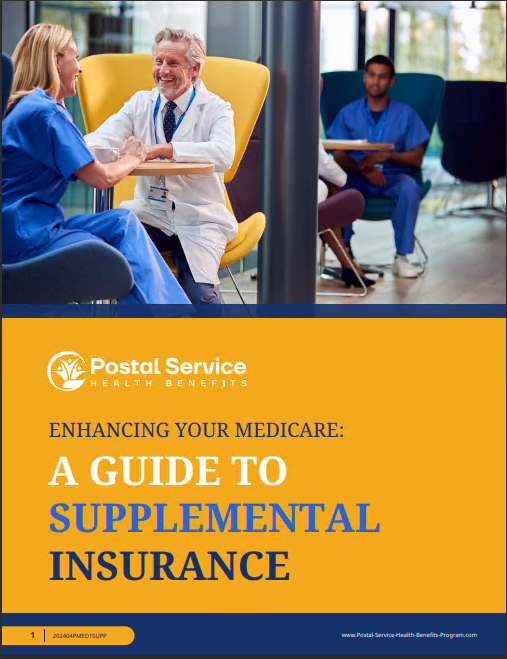Key Takeaways:
-
The transition to PSHB in 2025 brings significant changes to postal employees’ and annuitants’ health benefits, offering tailored options for their unique needs.
-
Key differences between PSHB and FEHB include plan design, Medicare integration, and premium structures, which may impact your healthcare decisions.
Understanding the Shift: What Is PSHB?
The Postal Service Health Benefits (PSHB) program replaces the Federal Employees Health Benefits (FEHB) system for eligible USPS employees, retirees, and their families. Starting in 2025, PSHB becomes the primary health coverage option for postal workers, reflecting a tailored approach to meet the unique needs of the postal workforce. This transition aims to improve affordability, streamline benefits, and enhance compatibility with Medicare for retirees.
If you’ve relied on FEHB for years, the switch may seem daunting. However, PSHB retains familiar elements of FEHB while introducing new features designed specifically for postal employees and annuitants. These adjustments are expected to make healthcare more efficient and cost-effective for current and retired postal workers alike. The new system emphasizes improved integration with federal healthcare programs and adapts to the evolving needs of its participants.
How PSHB and FEHB Compare
Eligibility Requirements
Under PSHB, eligibility remains similar to FEHB. Active postal employees, annuitants, and eligible family members can enroll. However, annuitants who are Medicare-eligible must enroll in Medicare Part B to maintain PSHB coverage, a notable shift from FEHB requirements. This integration supports cost savings and enhanced coverage but requires careful planning for retirees who are new to Medicare. The inclusion of Medicare Part B aims to reduce overall expenses for retirees, balancing the additional premium costs with broader benefits and reduced out-of-pocket obligations.
Plan Options
Both PSHB and FEHB offer a variety of plans, but PSHB plans are specifically curated for USPS employees. This means you’ll find fewer total options compared to FEHB but with benefits and costs tailored to postal needs. For example, PSHB plans may emphasize coverage for frequent medical services or chronic conditions common among postal workers. These streamlined options are designed to address recurring health issues within the postal community while offering comprehensive preventive care to minimize future medical expenses.
Premiums and Contributions
PSHB’s premium structure aligns closely with FEHB’s, with the federal government continuing to cover approximately 70% of the cost. However, PSHB’s plan design may lead to slightly different premium ranges, influenced by Medicare integration and postal-specific benefits. While premiums remain competitive, it’s essential to compare the value each plan offers. For active employees, premiums are structured to remain consistent with current expectations, while retirees will notice savings tied to the enhanced coordination with Medicare.
Medicare Integration
One of the most significant changes is how PSHB coordinates with Medicare. If you’re a Medicare-eligible annuitant, you’re now required to enroll in Medicare Part B. The integration reduces out-of-pocket expenses through benefits like waived deductibles and lower coinsurance rates. For many retirees, this combination results in improved overall coverage, but it does involve additional Medicare premiums. These reduced costs are particularly beneficial for enrollees managing chronic health issues or requiring frequent medical care.
Prescription Drug Coverage
PSHB plans include prescription drug coverage through a Medicare Part D Employer Group Waiver Plan (EGWP) for Medicare-eligible enrollees. This design simplifies drug costs while eliminating the infamous “donut hole” experienced under standard Part D plans. For those not enrolled in Medicare, drug coverage remains part of the standard PSHB offerings. Additionally, the use of EGWP enhances transparency in prescription pricing, ensuring consistent access to medications at manageable costs.
Key Changes for 2025 and Beyond
Open Enrollment Periods
The transition to PSHB requires active participation during open enrollment. In 2024, open season ran from November 11 to December 13, allowing postal employees and retirees to select a PSHB plan. Moving forward, changes to your health plan are limited to this annual window or qualifying life events (QLEs). Staying informed and proactive is essential to maintaining the coverage that best suits your needs. Missing key deadlines could result in delays or interruptions in coverage, making it crucial to act promptly.
Simplified Benefits Administration
By consolidating postal employees’ health coverage under PSHB, the USPS streamlines plan administration and reduces redundancy. This centralized approach helps ensure that benefits align closely with the workforce’s needs while simplifying the enrollment and claims processes. It also minimizes administrative challenges for both employees and healthcare providers, enabling faster resolution of issues and better communication between all parties.
Support for Transitioning Retirees
For retirees, especially those unfamiliar with Medicare, the shift to PSHB provides guidance and support for enrolling in Medicare Part B. Educational resources, workshops, and webinars are available to help retirees navigate this transition smoothly. These initiatives aim to demystify the complexities of Medicare, ensuring retirees fully understand their options and make informed choices that benefit their healthcare and financial stability.
Making Sense of Costs and Coverage
Premiums and Government Contributions
As in FEHB, PSHB plans are cost-shared between employees or retirees and the government. Expect your premiums to fall within a range influenced by factors like plan type, family size, and Medicare status. The federal government’s 70% contribution helps maintain affordability for enrollees. For families, the tiered premium structure ensures manageable costs even with multiple dependents, offering flexibility for a variety of household sizes.
Deductibles and Coinsurance
PSHB plans generally feature deductibles comparable to those in FEHB, with lower amounts for in-network services. Coinsurance rates range from 10% to 30% for in-network care, with higher costs for out-of-network providers. Medicare integration for retirees significantly reduces these expenses, making healthcare more predictable and manageable. This predictability is particularly helpful for budgeting, as you’ll face fewer unexpected charges.
Out-of-Pocket Maximums
PSHB caps your annual out-of-pocket costs, protecting against excessive medical expenses. These limits apply separately to in-network and out-of-network services. For Medicare enrollees, the $2,000 cap on out-of-pocket drug costs under Part D is a welcomed addition. This cap addresses long-standing concerns about unpredictable prescription expenses, providing financial relief for those requiring high-cost medications.
Prescription Drug Costs
For Medicare-eligible enrollees, PSHB plans use EGWP for prescription coverage. This ensures stable drug costs with minimal out-of-pocket spending, eliminating gaps in coverage. If you’re not Medicare-eligible, prescription benefits remain integrated into your PSHB plan with similar cost structures to FEHB. Enhanced drug formulary options under PSHB are expected to improve access to newer and more effective medications.
Planning Your Next Steps
Evaluate Your Healthcare Needs
As the PSHB era begins, take time to assess your current and anticipated healthcare needs. Consider factors like chronic conditions, upcoming medical procedures, and prescription drug requirements. Knowing your priorities will guide you toward the right PSHB plan. Use online tools and benefit summaries to clarify how each option addresses your unique circumstances.
Compare Plan Options
Review each PSHB plan’s benefits, premiums, and out-of-pocket costs. If you’re Medicare-eligible, factor in the combined costs and coverage of Medicare Part B and your PSHB plan. Tools like plan comparison charts can simplify this process. Consulting with USPS benefits counselors can also provide valuable insights to aid your decision.
Understand Enrollment Requirements
Stay informed about key deadlines and eligibility criteria to ensure seamless coverage. If you’re transitioning to Medicare, start the enrollment process early to avoid penalties or gaps in coverage. Keep track of your enrollment confirmation to secure your benefits. Maintaining thorough documentation of your coverage choices can help resolve any disputes or errors.
Seek Expert Guidance
If the details of PSHB and Medicare integration seem overwhelming, don’t hesitate to seek help. USPS benefits counselors, Medicare representatives, and financial advisors can provide clarity and assist with decision-making. Accessing these resources early can save time and prevent misunderstandings later on.
What This Means for You
The move to PSHB signals a new chapter for postal employees and retirees. While it introduces changes, it also offers tailored solutions designed to improve affordability and access to healthcare. By understanding the differences between PSHB and FEHB and planning accordingly, you can make informed decisions that support your health and financial well-being.
For retirees, Medicare integration ensures comprehensive coverage at reduced costs, while active employees benefit from plans designed with their specific needs in mind. As you navigate this transition, use the tools and resources available to ensure your health plan aligns with your personal and family needs. Proactive engagement with your healthcare benefits will help you adapt to these changes seamlessly.






